Good afternoon Crandon residents. Last week I presented at a History On-Tap Program at the Hotel Crandon to a crowd of about 85 people. Afterwards, I received a few different requests to share my power-point presentation and while I am willing to do that, I also am planning to post the material online in hopes that others will find their way to it. (Local history is much more fun and exciting if it is shared!) Publishing my research on this site will also allow people to post comments about the presentation and hopefully, we will continue to learn from each other about our county and its heritage.
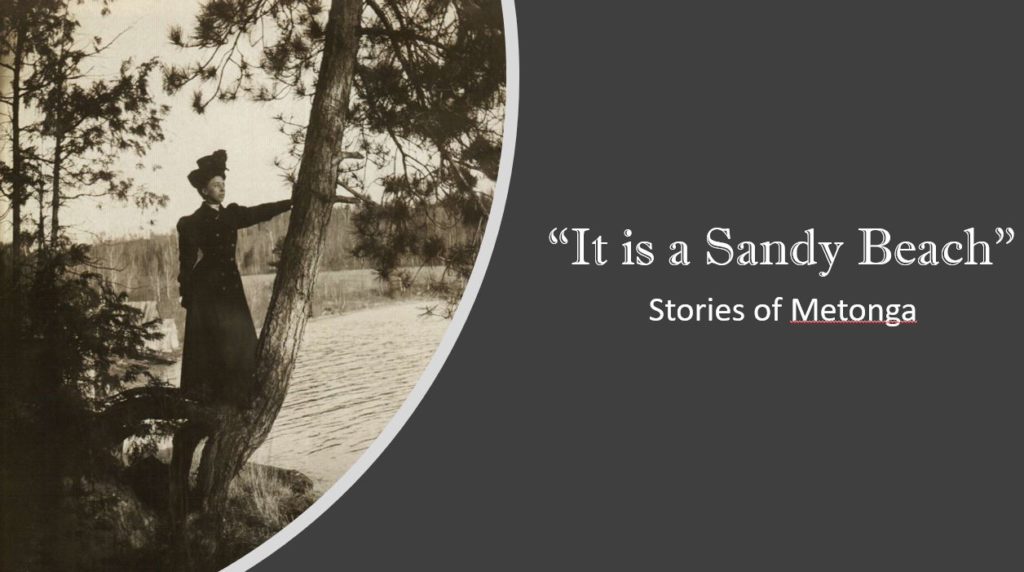
What’s in a Name?
When Forest County officially became a county by an Act of the Legislature in 1885, the lake that we now know as Metonga, was called Sand Lake. And in truth, the lake today is still called by that name. The definition of Sand Lake is in fact the Indian name “Mitaawangaa”, or as the English spell it, Metonga.
In fact, only a few short months after the county was established, the editor of the Forest Leaves published a description of the lake known as Metonga.
Additional research from The Ojibwe People’s Dictionary defines the word “sandy” as “mitaawangaa”
Another source document that was beneficial in determining the origin of the Lake’s name was provided by the Forest County Potawatomi Library and Cultural Center. In September of 1941, Mrs. Wm. Tahwah of Wabeno provided the following list of names of Forest County Lakes and their meanings:


Lake Cisco?
Lake Metonga residents might also be suprised to learn that they were at one time destined to live on a lake named after a the fish Cisco, also known as Lake Herring.
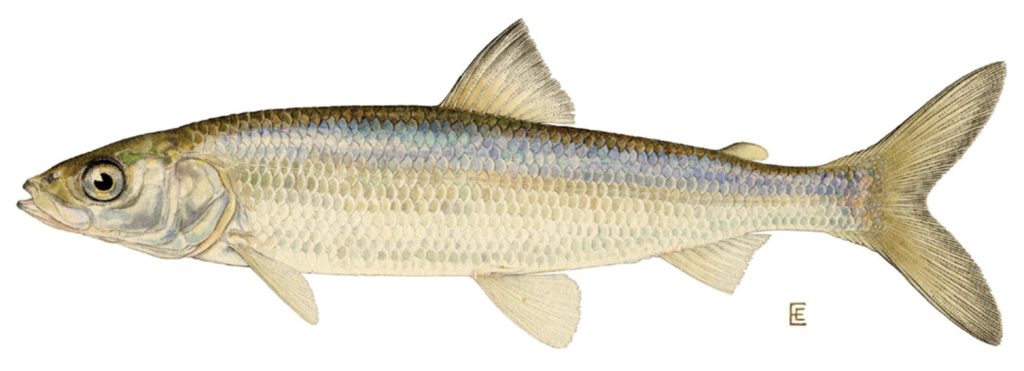

The Forest County Spy, published in Pelican Lake, Wisconsin on Tuesday, May 26th, 1885
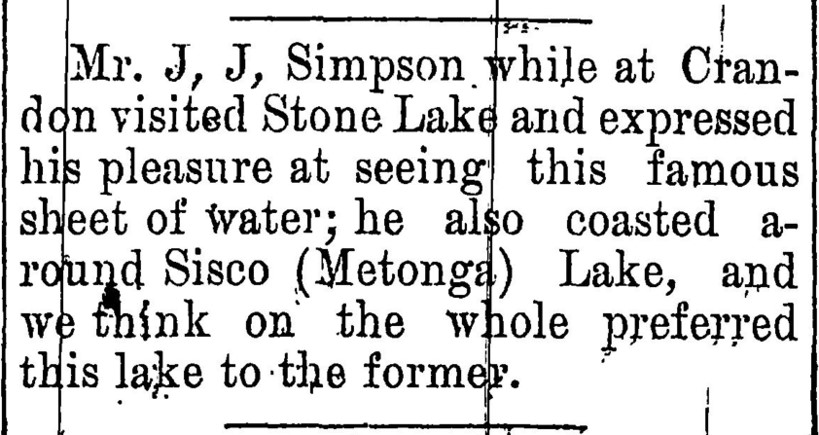
The Forest Leaves, published in Crandon, Wisconsin on Thursday, August 27th, 1885
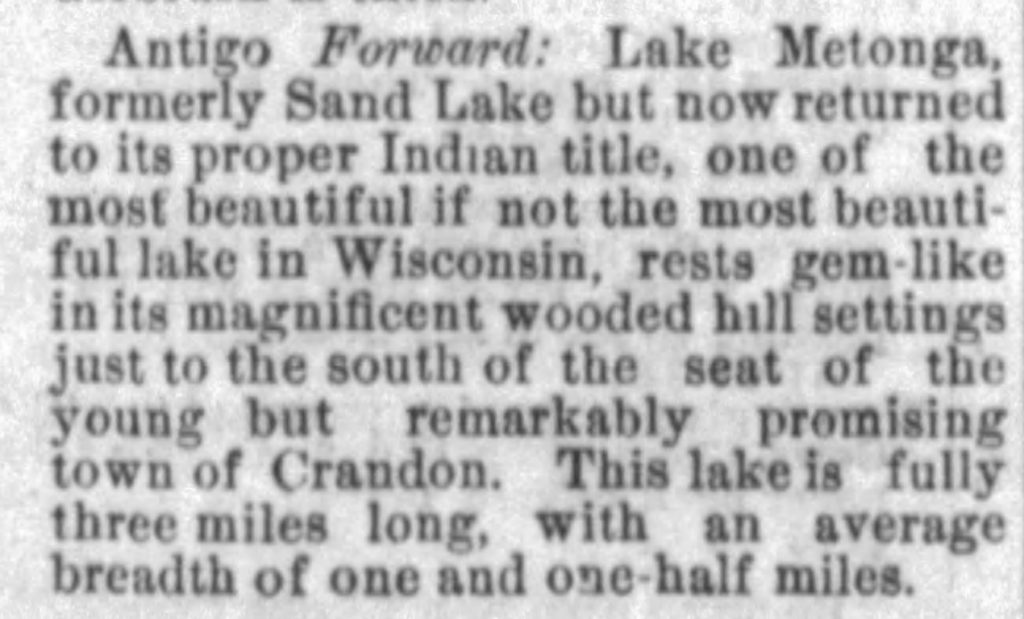
Saturday, February 6, 1886
Calling the lake by its Indian name caught on, and very soon there was no doubt the lake would be called Metonga.
However, its possible that not everyone agreed to have the name returned to its proper Indian title. As you can see from this 1906 Crandon map that hangs in the Forest County Courthouse Treasurer’s office, the name Sand Lake stuck around for some time.
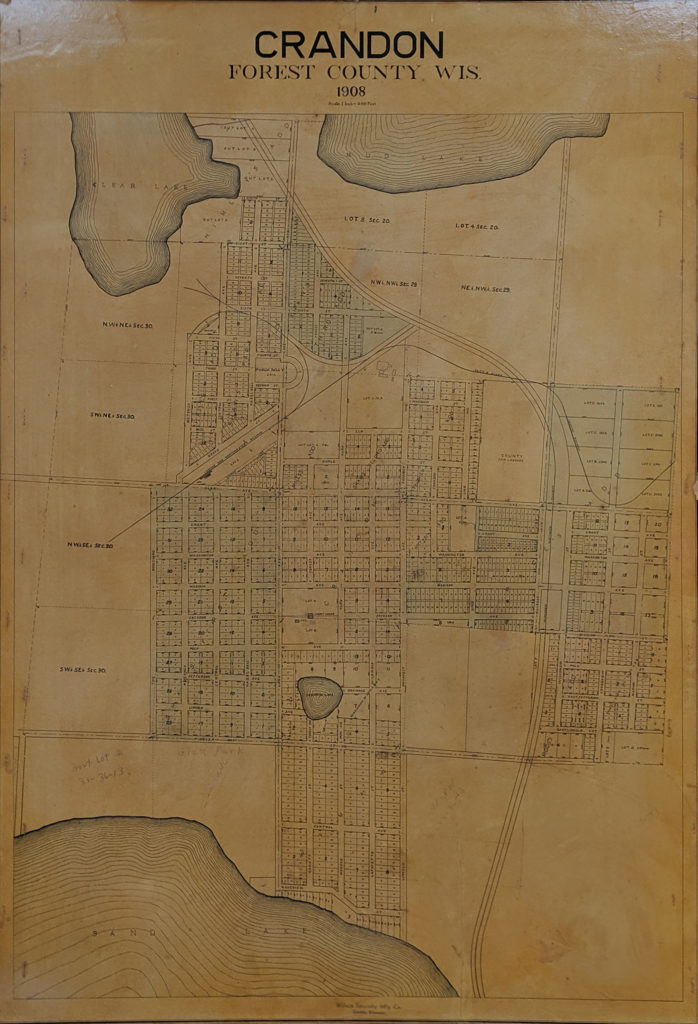
Next week we will begin our tour around Lake Metonga courtesy of a March 1887 newspaper article. Don’t forget to leave your comments and share some of your local history related to Lake Metonga.
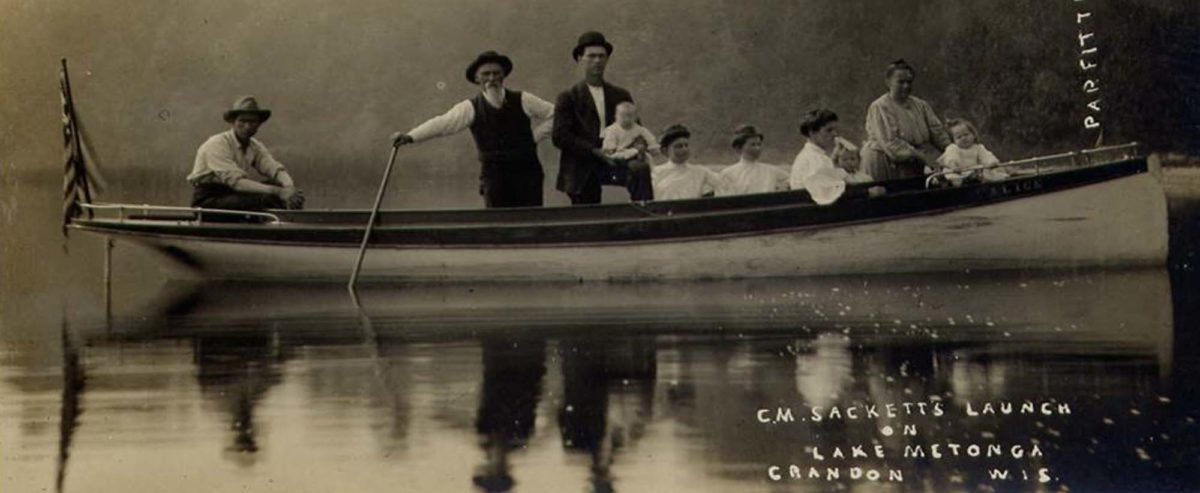
I remember when I was younger there was a sign out at the dam end of Metonga saying the lake was named after a chief?? Was this info wrong? Is this the reason the sign was taken down??
Hi Laura! Thanks for reading and leaving a comment— Wow. This is an interesting development! I am not familiar with this sign and I have not come across this idea in my research. However, that surely doesn’t mean anything. This is an excellent question for others. I will post the question on the Crandon History Facebook group (I believe I’ve seen you post on there before). We’ll see what we come up with! Thanks again!
Spent majority of each summer at the Crandon Beach. In the lake by 10:00am and out around 4:00pm. Thank You Lake Metonga!